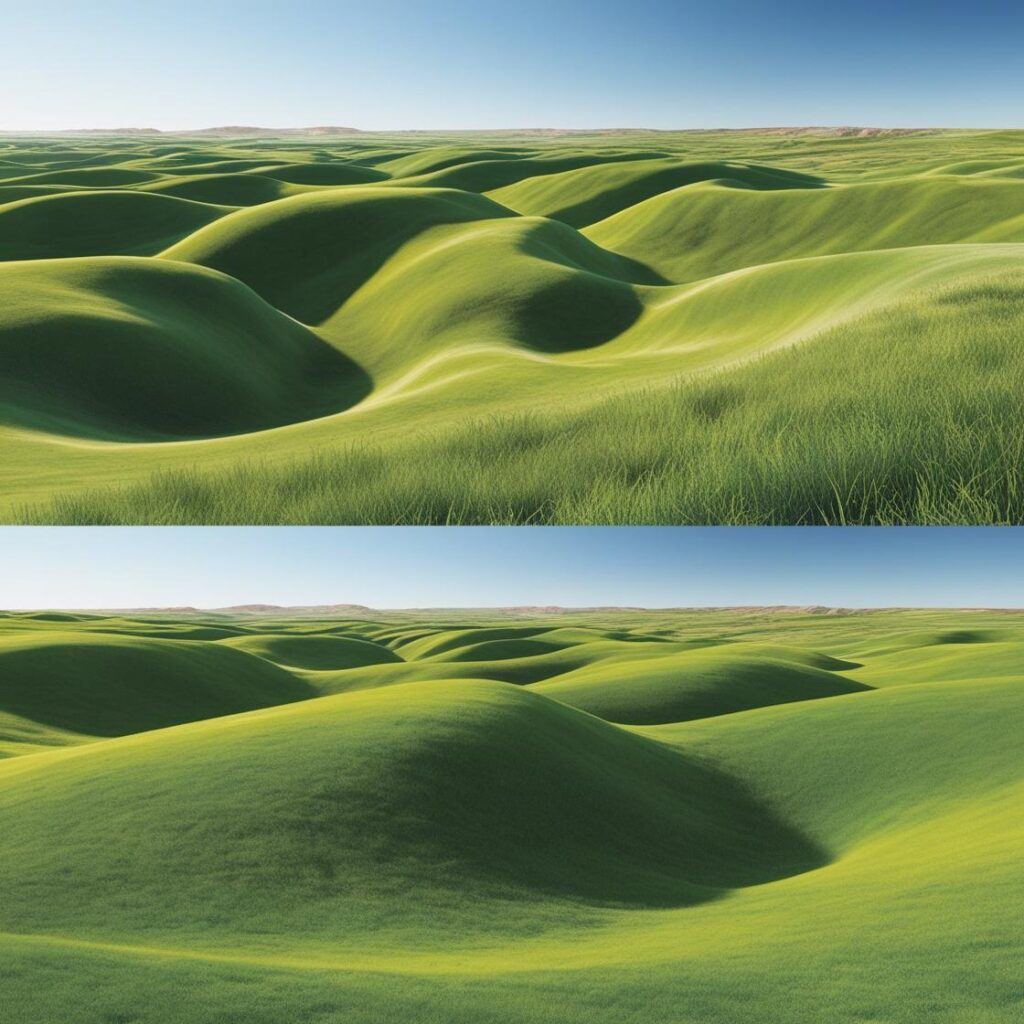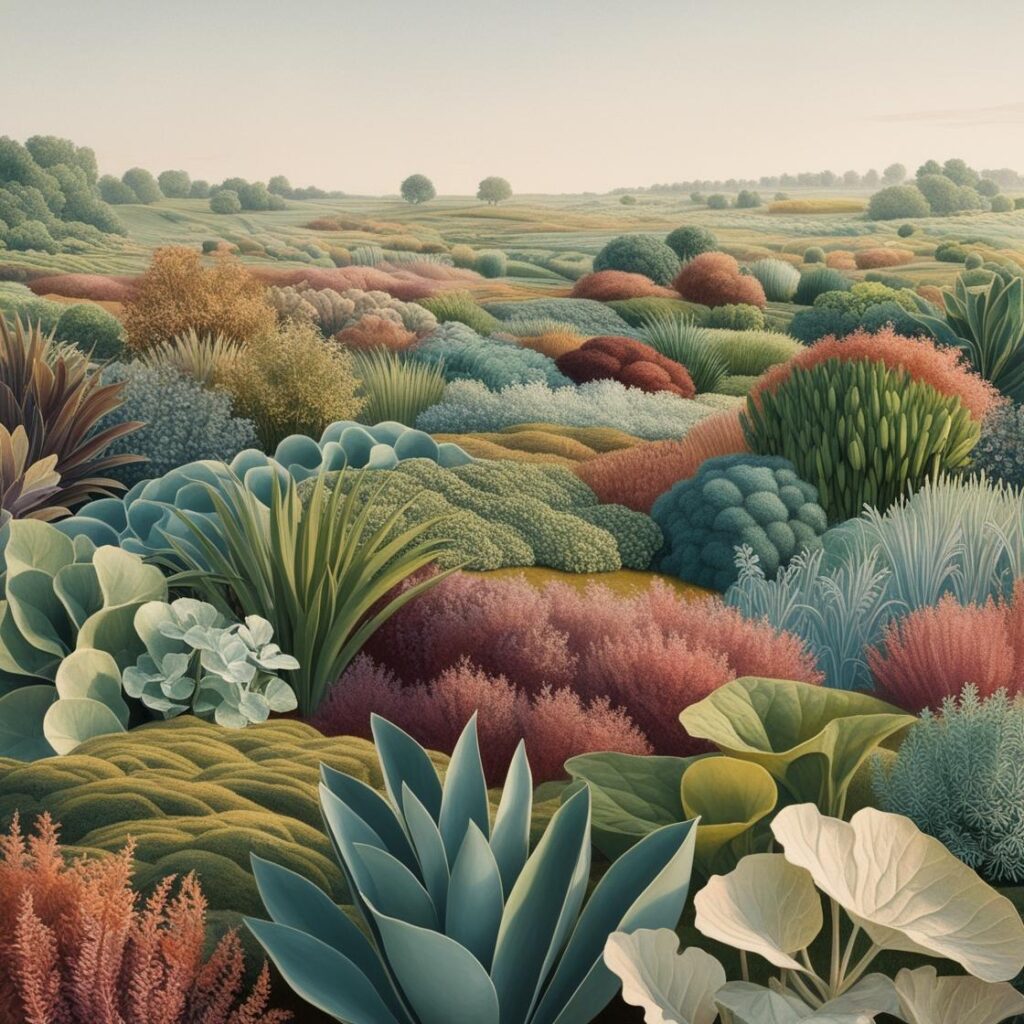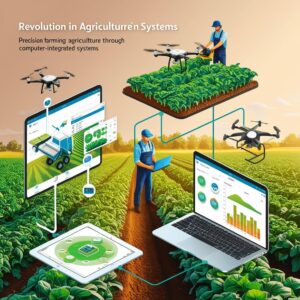Landscape architecture, like the landscapes it designs, can often transcend fixed boundaries, creating spaces that are more about potential and exploration than rigid definitions. The concept of “analogue fields,” introduced by Adrian Hawker, Elinor Scarth, and Tiago Torres-Campos, offers an insightful way to approach landscape design by emphasizing flexibility, creativity, and direct engagement with the environment. This article delves into how landscapes can evolve without predefined borders, the methods of representation in design, and the importance of maintaining fluidity in the creative process.

Landscape Without Boundaries
In traditional landscape architecture, sites are often treated as confined areas with set parameters. However, analogue fields challenge this notion by rejecting strict boundaries. This approach opens up landscapes as spaces for potential and speculation, moving away from rigid definitions and towards more dynamic interpretations.
Landscapes that lack fixed borders may not fit into conventional forms of representation like maps or aerial images. Instead, they require innovative design methods that go beyond binary decisions of “right” or “wrong.” This approach allows for a gradual development of appropriateness rather than a rush to perfection. It also creates an immersive interaction with the landscape, where designers explore factors such as change, materiality, and atmosphere.
Fieldwork and Representation: A Continuous Cycle
The process of designing a landscape often begins with fieldwork, which involves physically engaging with the site. This can include activities like walking, observing, and collecting data. These on-the-ground observations are crucial as they allow designers to experience the landscape directly.
However, the work doesn’t end in the field. Once back in the studio, the information gathered is transformed into various forms of representation—drawings, models, and other visual aids. This studio work is, in itself, another kind of fieldwork where the goal is not just to analyze but to propose new possibilities. This process involves multiple layers of consideration, where different concerns come into play, from the structure of the land to its ecological functions.
Stan Allen, in his essay “Field Conditions,” describes this design process as one that focuses on local connections and relationships rather than overarching geometric patterns. It’s not about creating a specific form, but about understanding the relationships between elements in the landscape and how they influence one another. This fluidity allows for creativity and adaptability, creating designs that are more responsive to the landscape’s needs.
Actionable Tips for Landscape Design Enthusiasts
- Engage Directly with the Landscape: Fieldwork is essential. Spend time walking, observing, and interacting with the site to fully understand its potential and challenges.
- Avoid Rigid Boundaries: Don’t feel restricted by fixed site parameters. Allow the landscape to evolve naturally, embracing its fluidity and potential for change.
- Use Representation as Exploration: When drawing or modeling, think of these as ongoing processes rather than finished products. Each iteration offers new insights and possibilities.
- Balance Structure with Flexibility: While a design needs some structure, leave room for adaptability. The landscape may reveal new opportunities as the design progresses.
- Focus on Relationships, Not Forms: Instead of concentrating on creating a specific shape, focus on how different elements within the landscape interact and influence one another.
Analogue Fields in Practice
In analogue fieldwork, the landscape is viewed not just as a static site but as a living entity with its own dynamics. The term “field” itself is multifaceted. It can refer to a physical space like a farm field, or it can describe a space where forces interact, like in physics. In design, the field is both the subject of study and the canvas on which designers work.
Analog fieldwork is about keeping things open, flexible, and dynamic. The process is iterative: designers draw, then redraw; model, then remodel. Each new version offers a fresh perspective, and no two versions are ever exactly the same. This iterative process helps designers resist the temptation to finalize ideas too quickly, allowing the landscape’s narrative to unfold organically.
Table:
| Concept | Description |
|---|---|
| Analogue Fields | Flexible approach to landscape design that avoids strict boundaries and embraces potential. |
| Fieldwork | Direct engagement with the landscape through activities like walking and observing. |
| Representation | Studio work that transforms field observations into drawings, models, and proposals. |
| Iterative Design Process | The practice of drawing, modeling, and reworking designs to explore new possibilities and ideas. |
| Focus on Relationships | Emphasis on how elements within the landscape interact rather than focusing on creating fixed forms. |
Landscape architecture thrives without predefined boundaries. Engage directly with the landscape through fieldwork and immersive activities. Avoid fixed forms; instead, focus on relationships and interactions within the landscape. Use an iterative process—draw, model, and create multiple versions to refine ideas. Balance flexibility with structure, letting the design evolve naturally. To explore fascinating parallels, consider studying Mars analog environments where iterative design and adaptability are crucial for understanding extraterrestrial landscapes: Mars Analog Environments: What and Where.

About Us
Welcome to Agriculture Novel, your go-to source for in-depth information and insights into the world of agriculture, hydroponics, and sustainable farming. Our mission is to educate, inspire, and empower a new generation of farmers, hobbyists, and eco-conscious enthusiasts. Whether you’re interested in traditional farming practices or modern innovations, we aim to provide comprehensive guides, expert tips, and the latest updates in agriculture and urban farming.
At Agriculture Novel, we believe in the power of knowledge to transform the way we grow, sustain, and nourish our world. Explore our articles on topics like Fruit Growing Guide, Hydroponics, Plant Deficiency Guide, and more.
Thank you for joining us on this journey towards a greener, more sustainable future!
About Agronique Horizon
At Agronique Horizon, we specialize in delivering comprehensive digital marketing and web development solutions tailored for the agriculture and hydroponics industries. From custom website design and app development to social media management, we provide end-to-end support for brands aiming to make a meaningful impact. Our team also offers innovative solutions for the real estate sector, bringing precision and visibility to your projects. Learn more about our services here and discover how we can elevate your digital presence.





